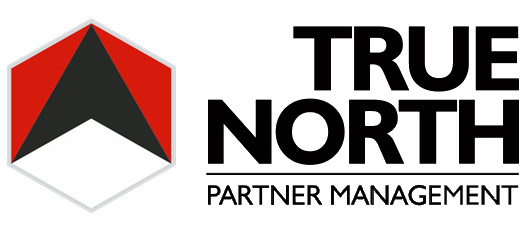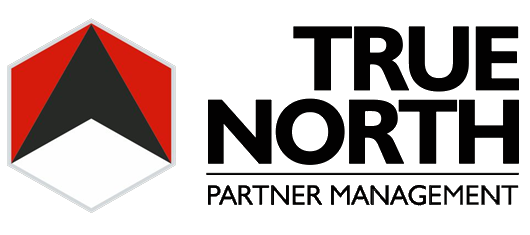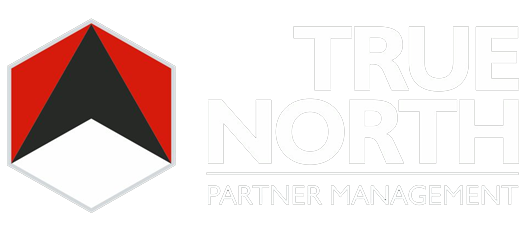The following post originally appeared on Forbes | February 2, 2016
By the age of 23, attorney Jason Honigman had argued his first case before the Michigan Supreme Court, winning against William Henry Gallagher, one of Michigan’s most venerated attorneys. Less than 10 years later, he found himself arguing and winning before the US Supreme Court, reversing a prior precedent. A brilliant attorney, Honigman was very successful at a young age, and ultimately left the law firm of Sempliner, Dewey, Stanton & Bushnell to focus on his investments and set up his own shop – Honigman Miller. And while his intentions were to remain small, with his son Daniel’s decision to follow in his footsteps, Jason wanted to leave an “ongoing significant law firm” behind, a legacy, that his son could practice in – there began the rise of Honigman Miller Schwartz and Cohn LLP.
Today, with a Midwest headquarters, 6 offices, approximately 300 attorneys, and revenue in the ~$200M range, Honigman (the firm) is representative of an increasingly important “midmarket” class of law firm that seeks to leverage proportionality and value to better provide for the broadening spectrum of the complex legal consumer’s needs. Below we hear from Honigman chairman, David Foltyn, about his views on technology, law firm real estate, strategy, and the pressures on a firm of their size. See a revised and edited (for readability) version of our exchange below:
On Challenges They Are Facing As a 300 Attorney Firm
Parnell: Let’s start at the beginning and just talk about some of the most pressing challenges that you’re facing as a three hundred attorney firm; talk to me about that. In your eyes, what are the top pressures of change that a firm your size is dealing with.
Foltyn: I think the first thing is that BigLaw firms – all firms – are businesses. The business of law is completely different than it was 35 years ago. The investment that is required – technology, process improvement, information management — was non-existent when I started my career in 1980. 35 years ago you just showed up for work; you didn’t have computers and laptops; you didn’t have fax machines and smart phones. The investment in a law firm was basically people. You hired the best people. You had a library and an office. There was really no need to have long-term planning, or to have a long-term capital plan. So the first notion really is that it is a business. And if you don’t run your law firm like a business, you really are going to have serious problems.
The second thing, which I think is a positive, is the focus on client service, and on delivering legal services in a way in which a sophisticated client that is careful with its money wants its services delivered. When I began my career, law firms “owned” clients. If you were assigned a litigation matter, you took it and ran with it. You didn’t talk to the client. You would call back once you had a settlement or knew that you were going to try the case. Today our clients demand – as they should – that we sit down with them at the outset of the engagement in order to gain an understanding about their objectives, how we should staff the project, and how often and in what manner they would like us to communicate with them.
A third one, which I think is very important, is diversity. To keep up with an increasingly diverse world, we need to develop a diverse workforce, retain it, and then make certain it thrives. This is a good thing — though very different from how it was when I started. At that time, law, particularly BigLaw, was dominated by older, white men. That is no longer the world we live in.
On Defining Value And Providing It
Parnell: Your website talks about your firm instituting innovative strategies to become a value leader. “Value,” I have found, is defined any number of different ways depending on who you talk to. So could talk about how you define the term “value leader?” And, if you could talk about some of the strategies, specifically, that you’ve implemented in order to achieve that.
Foltyn: When I first started it was quality, quality, quality, quality. Then it became about cost. But we started to see that, in our minds, what clients really wanted was “value.” We conducted a client survey to determine how our clients defined value. Their and our definition of value is true commitment to the clients; understanding the client and its business and objectives, delivering outstanding quality work with efficient and proportionate resource allocation, and appropriate communication. This is true at all price points but particularly true at our price points.
Importantly, we think the right person needs to be on the right task. So we use the term “proportionality” here: not everything has to be a bespoke suit. In many instances, there is nothing wrong with Brooks Brothers. It is the client’s choice. That requires there to be understanding with the client at the beginning that some things don’t call for scorched earth.
Predictability is a big one for us, too. I marvel at how you can design an airport and have a budget for the airport, but for some reason, if you go to a business lawyer whose firm had done two hundred transactions in the past year or a litigation firm with years of experience, they haven’t yet figured out how to make their service predictable in terms of price. The technology is there; the staffing and project management techniques are there; the knowledge-base is there. There is no reason that a CFO can’t have some predictability for the next quarter in terms of what our product is going to cost.
Service and communication are another part. Professionals are not always the greatest communicators in the world. The client wants to feel that they are being communicated with and heard. By that I mean that some clients want an e-mail a day, whereas some may want a conference call every two weeks, or when there are developments. You just need to be in sync with the client.
Something else we consider is a real commitment to help, which means that we must understand and be a part of our client’s industry. Not just selling, but keeping them in mind in terms of what developments have occurred that might make sense to them. No one wants another brochure, but clients value a call that tells them about new developments in the industry, finding out if they apply to them, and so forth.
The last one, frankly, is really simple, and goes back to my family’s business that I worked in growing up: just a little “something added.” I look to the hospitality world as an analogy. You stay at a good hotel – and it doesn’t have to be as expensive as a Four Seasons, although they are great at this – you feel good, cared for. Somebody walks around there and asks themselves what does the customer want? What does the client want? It’s that little something extra.
On Delivering That Value Through Technology
Parnell: So what are some of the things that you’re doing in order to ensure the delivery of value? What are some of the technologies that you’re using to help deliver this?
Foltyn: I’m too old for technology, so I’m learning as best as I can. The first thing we did when we really were trying to deliver a legal service in a different model than we’ve been using before is that we organized ourselves into two divisions: business and litigation. We created six departments; four of them in business, and two in litigation. We then brought in a non-lawyer – essentially a chief operating officer – of each division, and they are there to be a resource to the department heads in the two divisions, to get things done. We embedded non-lawyers in each division with very special skills in staffing and project management, information management, and client service.
We’re doing a great deal with client data management. Not just for specific deals or trials, but actually tracking long-term data management for our clients. For example, we have a national private equity practice, and some of our private equity clients use our technology to create a database for them that, deal by deal, are reminders of what needs to be done in the future. There are summaries of things to come back to when the portfolio company matures and is sold, summaries of loan rates, and much more. Summaries of specific provisions we have negotiated so that the deal team has a resource for future transactions.
Also, we are currently looking at, and, I think, close to rolling out, tablet computing. This opens up a whole vista of opportunities for us and our clients to communicate and work through. We are building in technology for group collaboration. Things that I can’t even understand how they work; I just know when I get it that I like it. And then we have a tremendous amount of time and systematic work on contract review software, legal project management budgeting, things that keep us on task and help us communicate with the client.
On Law Firm Real Estate
Parnell: With economic efficiency in mind, what are your thoughts on law firm real estate? Do you have plans on increasing yours, or maybe decreasing as time pushes on? What are your thoughts on that?
Foltyn: One thing Jason Honigman would tell us was that no law firm ever failed because its offices weren’t big enough or nice enough. And it’s funny, as just yesterday I was out of town visiting a client — a several billion dollar market cap company – who I think is going to shift a lot of their work from a money center firm, here. The topic of real estate came up and the general counsel and the chief strategist said to me that they were in the other firm’s San Francisco office — a breathtaking office with breathtaking views in a spectacular conference room — and they were asking themselves, “How much of this $1,200 hourly rate for our lawyer went into this facility?”
In a way, we’ve been blessed on this one. We are in Michigan, by and large, in a lower cost real estate environment. Detroit, Michigan is now booming, but the rents here, or in Kalamazoo, Michigan, or Lansing, Michigan, they’re just not the same issue that firms are having in New York, or San Francisco, or London.
We are also very strategic in the use of our space. Our headquarters are in Detroit; our core administrative staff is in Detroit, too, which tends to be less expensive real estate than elsewhere. We are in the process of refurbishing our Detroit headquarters – it will be light, modern, and efficient, conducive to collaboration and a more modern approach to the delivery of legal services.
On Their Strategy
Parnell: Moving into your firm’s overall strategy. When you take a look at obviously-global law firms, for example, the endgame of their strategy is perhaps a bit easier to discern. But, because of the size, makeup, and location of your firm, I’m not sure where you’re looking to take things over the next 5 to 10 years. With that in mind, what is your strategy?
Foltyn: Our strategy is partly informed by where we are, and I’ll give a little background to that. If a lawyer is going to be in Michigan, we are a compelling place to land. Most of our people are in Michigan either because the spouse is here working, or one or both of them are from here and they’re ready to come home from a major market to be near grandparents and family. With that in mind, we have a very definite recruiting strategy. In the last 21 months, we’ve brought five Kirkland lawyers into the firm, two Latham & Watkins, and they joined another three, four, or five Latham & Watkins attorneys that were already here. There is also an attorney here who came from the London office of a BigLaw firm. A couple from Paul Hastings and Winston & Strawn attorneys as well. A few of these are in Chicago, but we’ve been bringing them to Michigan forever. So the consequence is — if you look at our Web site — the pedigrees of our lawyers really don’t look any different than any money center firm in terms of education and experience.
Strategically, we’re a full service firm, and we focus on a few things that we do exceedingly well. And that strategy means we are a very high-end, midmarket law firm. And midmarket could be an $8B market cap, public company; a $1B negotiated transaction, or an important project for a Forbes 500 company. And so in the midmarket area, we have a private equity practice that is global. Our typical business development has been the fund on the other side of us sees the sources of funds, the flow of funds, and they see that a great job was done for about 40-45% of what it would cost in a BigLaw firm.
Historically, we’ve had a national real estate practice; one that’s very well known, and is developer-oriented. As it happens, a number of the major real estate developers came out of Michigan, such as the Taubman Company. We grew with them. They’re of the same generation as us. And by being in the industry, we’ve developed very, very substantial expertise.
The third main piece to this is IP and IP litigation. A few years ago, we decided that commercial litigation is not on the upswing. But we concluded that IP litigation was still a growing area — along with regulatory and white collar, and a few others. But we thought we needed to have a core IP critical mass before we could bring in litigators. Six years ago, we had about ten attorneys, and today we’re up to 85 timekeepers, including 40 or 45 attorneys; nine with life-science PhDs and 13 with masters in science degrees.
We want to strengthen everything. And strategically over the next five years, we want to continue to make progress. We want to differentiate ourselves by the specialized things we do midmarket, and the important work for Fortune 500 companies. We think that an important part of the strategy is to continue to implement the value model, and to get better and better at it.
On The Most Valuable Legal Attributes
Parnell: What are the attributes or the skills that you see as being the most valuable in the next five years or so? Let’s say that you were starting out as junior partner – you’d just made partner this year – but knowing everything that you would know right, where would you focus your own skill development?
Foltyn: I think most really haven’t changed that much from when I started here, 35 years ago. A key attribute has to be integrity. All we have is our name, and we have to be fair, civil and honest with one another, with our clients, with the courts, with governments, administrative agencies, and with opposing counsel.
Next would be communication skills — written and verbal. Jason Honigman used to say that if he couldn’t understand what you wrote, then he couldn’t tell whether you understood the issue you were analyzing. I think that both verbal and written skills are more important than ever.
Another critical attribute is business skills. You need to be able to have a basic understanding of finance and financial statements. It doesn’t matter if you’re a litigator, or an IP lawyer, or a corporate lawyer, businesses are interested in profits. And, in order to really understand your client and its needs, and understand how to be of value to your client, you need to understand the language that that client is dealing with. I think all lawyers need business skills to run their own businesses. Jason Honigman used to ask us why a business person would ever hire an attorney who can’t run his own business. Understanding industries, what your clients are thinking, and listening skills are also essential.
Leadership skills are very important, too. Lawyers are not necessarily good leaders. We are about seven standard deviations off on resiliency. And because we are, we cannot tolerate failure. And, if we can’t tolerate failure, we can’t innovate and we can’t learn, or grow. Our clients understand failure. Nobody wants to fail; but when a business person fails, she doesn’t give up, but instead asks herself what she learned from the experience.
And the last thing, for me – and it relates to leadership – is managing stress. There’s a lot of stress involved in what we do. Time pressures, demands on and from the client, on the attorney and on the legal teams. It doesn’t matter if it’s litigation or a deal. There’s a tremendous amount of stress involved. And I believe that part of a senior lawyer’s or senior team member’s job is to manage the client’s stress, her stress, and the stress of the others on her team.
On Where The Market Is Headed
Parnell: let’s talk about the market. Where do you see it going, at say a twenty thousand foot view, in the next ten years? What will it look like?
Foltyn: I think that you will have a fair amount of consolidations and law firm failures. You’ve got firms that are global and enormous, and have enormous investments in different places. And they’re starting to compete with one another globally. Accounting firms are just starting to compete at another high-end level. And I don’t know whether the market will support all of them. In the accounting world there are now four major firms. I can envision further consolidation among BigLaw.
Then there are firms at our level, which is a place that I like a lot. But I think there will be some shake-outs in our space, too. But, very good firms that get the value proposition will do fine. I think you’ll still see some consolidation among the very good firms, and it will be where it serves a client. Where can we fill in a hole? And where do we need to be in “this” practice, to stay ahead of our clients?
I think you’ll probably see law schools educating differently. I think you’ll see applications to law school in a different light. I think that the top students are always going to get good jobs, but there are a whole lot out there who won’t. Technology is going to be critical, and the investment that firms are going to have to make in technology, process, and staffing is substantial. We don’t borrow; we have a clean balance sheet. In the UK, non-lawyers can invest in law firms. What will our ability be – especially for the global firms – to keep making the investments that we have to make from our partners’ capital?
But at the end of the day, I think lawyering is still a nice way to make a living. We work with and advise very smart people and learn every day from our colleagues and clients. We are really in a new and rapidly evolving marketplace. It’s an exciting time to be an attorney. There are many threats to traditional practice coming from the outside, such as non-traditional virtual law firms and other disruptors. Those of us who can adapt and be value leaders in this new legal marketplace will continue to have rewarding careers.
Email: [email protected] Twitter: @davidjparnell
Books: The Failing Law Firm: Symptoms And Remedies; In-House: A Lawyer’s Guide To Getting A Corporate Legal Position



